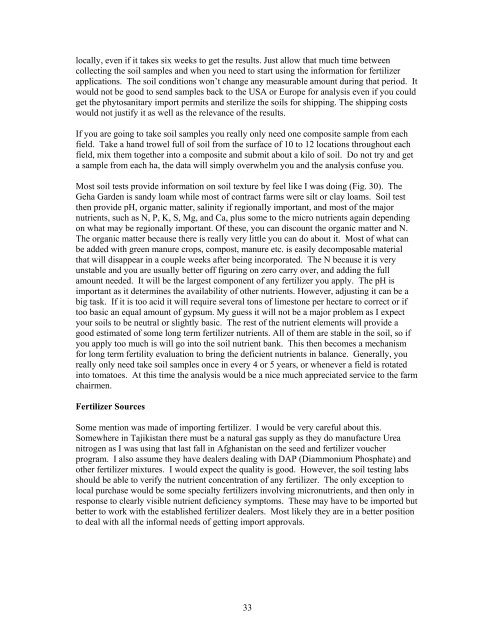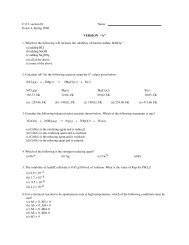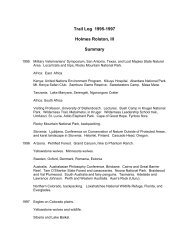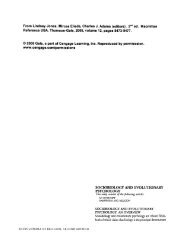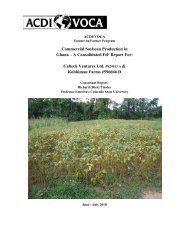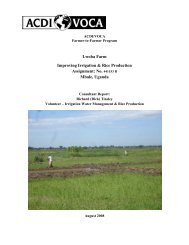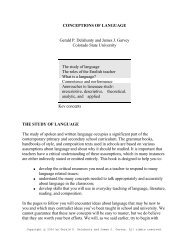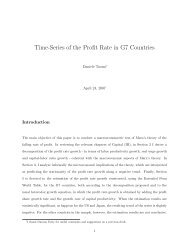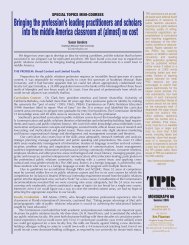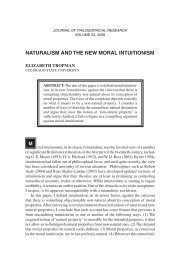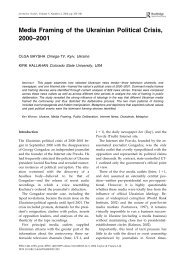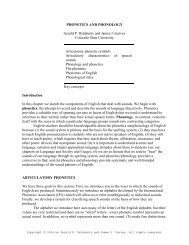Geha Foods Evaluation of Irrigation for Processed Tomatoes
Geha Foods Evaluation of Irrigation for Processed Tomatoes
Geha Foods Evaluation of Irrigation for Processed Tomatoes
You also want an ePaper? Increase the reach of your titles
YUMPU automatically turns print PDFs into web optimized ePapers that Google loves.
locally, even if it takes six weeks to get the results. Just allow that much time between<br />
collecting the soil samples and when you need to start using the in<strong>for</strong>mation <strong>for</strong> fertilizer<br />
applications. The soil conditions won’t change any measurable amount during that period. It<br />
would not be good to send samples back to the USA or Europe <strong>for</strong> analysis even if you could<br />
get the phytosanitary import permits and sterilize the soils <strong>for</strong> shipping. The shipping costs<br />
would not justify it as well as the relevance <strong>of</strong> the results.<br />
If you are going to take soil samples you really only need one composite sample from each<br />
field. Take a hand trowel full <strong>of</strong> soil from the surface <strong>of</strong> 10 to 12 locations throughout each<br />
field, mix them together into a composite and submit about a kilo <strong>of</strong> soil. Do not try and get<br />
a sample from each ha, the data will simply overwhelm you and the analysis confuse you.<br />
Most soil tests provide in<strong>for</strong>mation on soil texture by feel like I was doing (Fig. 30). The<br />
<strong>Geha</strong> Garden is sandy loam while most <strong>of</strong> contract farms were silt or clay loams. Soil test<br />
then provide pH, organic matter, salinity if regionally important, and most <strong>of</strong> the major<br />
nutrients, such as N, P, K, S, Mg, and Ca, plus some to the micro nutrients again depending<br />
on what may be regionally important. Of these, you can discount the organic matter and N.<br />
The organic matter because there is really very little you can do about it. Most <strong>of</strong> what can<br />
be added with green manure crops, compost, manure etc. is easily decomposable material<br />
that will disappear in a couple weeks after being incorporated. The N because it is very<br />
unstable and you are usually better <strong>of</strong>f figuring on zero carry over, and adding the full<br />
amount needed. It will be the largest component <strong>of</strong> any fertilizer you apply. The pH is<br />
important as it determines the availability <strong>of</strong> other nutrients. However, adjusting it can be a<br />
big task. If it is too acid it will require several tons <strong>of</strong> limestone per hectare to correct or if<br />
too basic an equal amount <strong>of</strong> gypsum. My guess it will not be a major problem as I expect<br />
your soils to be neutral or slightly basic. The rest <strong>of</strong> the nutrient elements will provide a<br />
good estimated <strong>of</strong> some long term fertilizer nutrients. All <strong>of</strong> them are stable in the soil, so if<br />
you apply too much is will go into the soil nutrient bank. This then becomes a mechanism<br />
<strong>for</strong> long term fertility evaluation to bring the deficient nutrients in balance. Generally, you<br />
really only need take soil samples once in every 4 or 5 years, or whenever a field is rotated<br />
into tomatoes. At this time the analysis would be a nice much appreciated service to the farm<br />
chairmen.<br />
Fertilizer Sources<br />
Some mention was made <strong>of</strong> importing fertilizer. I would be very careful about this.<br />
Somewhere in Tajikistan there must be a natural gas supply as they do manufacture Urea<br />
nitrogen as I was using that last fall in Afghanistan on the seed and fertilizer voucher<br />
program. I also assume they have dealers dealing with DAP (Diammonium Phosphate) and<br />
other fertilizer mixtures. I would expect the quality is good. However, the soil testing labs<br />
should be able to verify the nutrient concentration <strong>of</strong> any fertilizer. The only exception to<br />
local purchase would be some specialty fertilizers involving micronutrients, and then only in<br />
response to clearly visible nutrient deficiency symptoms. These may have to be imported but<br />
better to work with the established fertilizer dealers. Most likely they are in a better position<br />
to deal with all the in<strong>for</strong>mal needs <strong>of</strong> getting import approvals.<br />
33


